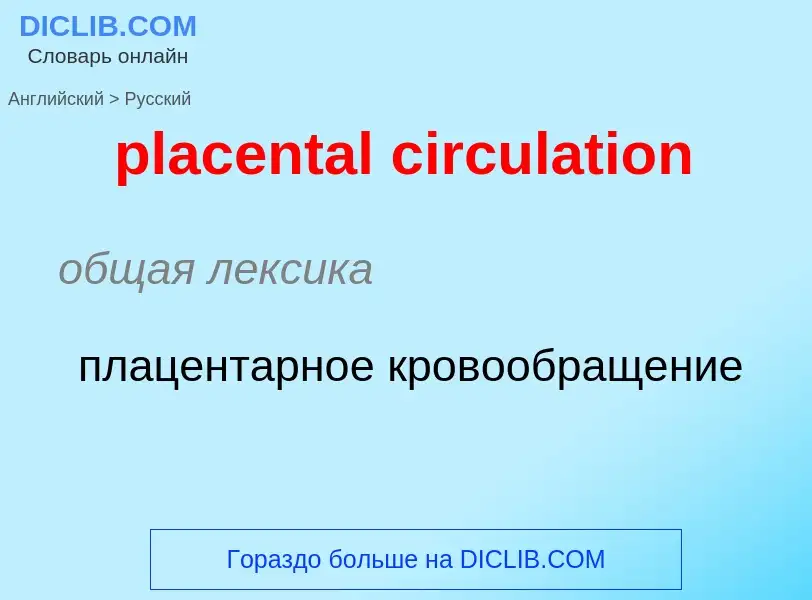Translation and analysis of words by ChatGPT artificial intelligence
On this page you can get a detailed analysis of a word or phrase, produced by the best artificial intelligence technology to date:
- how the word is used
- frequency of use
- it is used more often in oral or written speech
- word translation options
- usage examples (several phrases with translation)
- etymology
placental circulation - translation to russian
общая лексика
плацентарное кровообращение
[plə'sentə]
общая лексика
плацента
семеноносец
ботаника
семяносец
Смотрите также
существительное
ботаника
семяносец
анатомия
плацента
медицина
плацентарные гормоны
Wikipedia
The placenta is a temporary embryonic and later fetal organ that begins developing from the blastocyst shortly after implantation. It plays critical roles in facilitating nutrient, gas and waste exchange between the physically separate maternal and fetal circulations, and is an important endocrine organ, producing hormones that regulate both maternal and fetal physiology during pregnancy. The placenta connects to the fetus via the umbilical cord, and on the opposite aspect to the maternal uterus in a species-dependent manner. In humans, a thin layer of maternal decidual (endometrial) tissue comes away with the placenta when it is expelled from the uterus following birth (sometimes incorrectly referred to as the 'maternal part' of the placenta). Placentas are a defining characteristic of placental mammals, but are also found in marsupials and some non-mammals with varying levels of development.
Mammalian placentas probably first evolved about 150 million to 200 million years ago. The protein syncytin, found in the outer barrier of the placenta (the syncytiotrophoblast) between mother and fetus, has a certain RNA signature in its genome that has led to the hypothesis that it originated from an ancient retrovirus: essentially a virus that helped pave the transition from egg-laying to live-birth.
The word placenta comes from the Latin word for a type of cake, from Greek πλακόεντα/πλακοῦντα plakóenta/plakoúnta, accusative of πλακόεις/πλακούς plakóeis/plakoús, "flat, slab-like", with reference to its round, flat appearance in humans. The classical plural is placentae, but the form placentas is more common in modern English.

![Maternal blood fills the [[intervillous space]], nutrients, water, and gases are actively and passively exchanged, then deoxygenated blood is displaced by the next maternal pulse. Maternal blood fills the [[intervillous space]], nutrients, water, and gases are actively and passively exchanged, then deoxygenated blood is displaced by the next maternal pulse.](https://commons.wikimedia.org/wiki/Special:FilePath/Gray39.png?width=200)



![Placenta with attached [[fetal membranes]], ruptured at the margin at the left in the image Placenta with attached [[fetal membranes]], ruptured at the margin at the left in the image](https://commons.wikimedia.org/wiki/Special:FilePath/Placenta with fetal membranes.jpg?width=200)
![CMV]] placentitis) CMV]] placentitis)](https://commons.wikimedia.org/wiki/Special:FilePath/CMV placentitis1.jpg?width=200)





